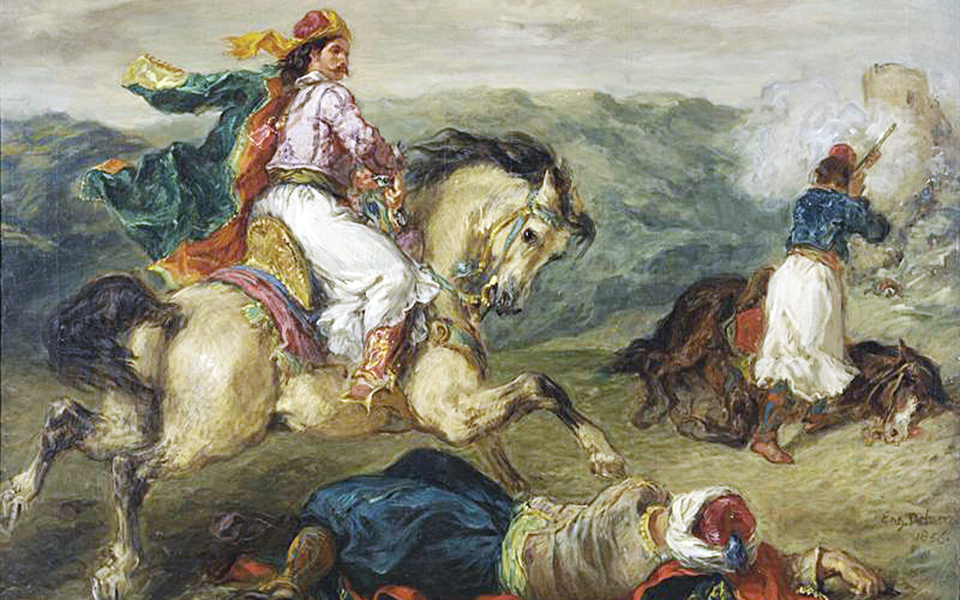The parallel exhibitions ‘Delacroix’ and ‘Philippoteaux’ at the Teloglion Foundation of Art of the Aristotle University in Thessaloniki have drawn excited reactions in both France and Greece. Museum executives in Greece were delighted when they saw items resurfacing from warehouses and dusty display cases to shine new light on previously unheralded aspects of major historical events – the Greek War of Independence, the Siege of Paris in 1870 and the first Modern Olympic Games in 1896 in Athens – that shaped and simultaneously linked the two countries.
This art event in Thessaloniki is not simply an exhibit of philhellenic works; nor is it an illustration of the Greek War of Independence. And it is not an artistic study linking the romanticism of the French artist with one of the few surviving 19th century cycloramas, ‘The Siege of Paris’ cyclorama by Henri Felix Emmanuel Philippoteaux, now again being exhibited in Greece since first seen at the 1896 Athens Olympics. Instead, the exhibit captures the very real friendship of the Greeks and the French in the most tragic moments of their histories.
Some important yet lesser-known pages from history come to life on canvas; scenes from the Franco-Prussian War of 1870-1871 can be seen here, as can the harsh realities of the Greek struggle for independence, captured in the epic dimensions of one of Delacroix’s most noted works, ‘The Massacre at Chios’, as well as in his ‘Greece on the Ruins of Messolonghi.’
“The exhibit captures the very real friendship of the Greeks and the French in the most tragic moments of their histories.”
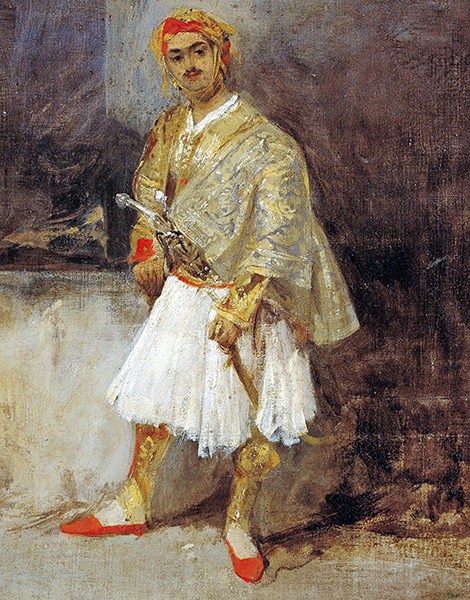
© Athens, National Gallery - Alexandros Soutzos Museum, Athens
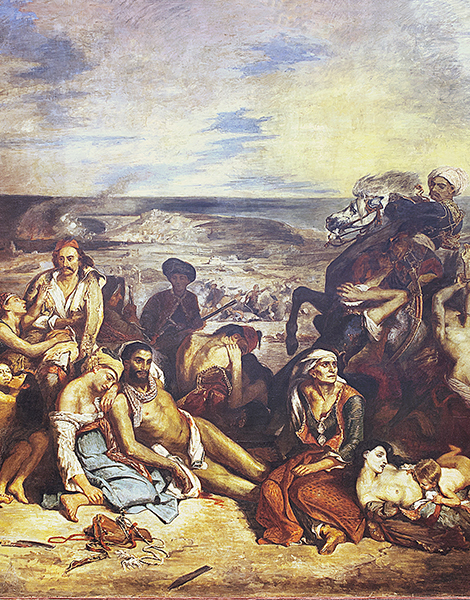
© Byzantine Museum (Chios Ephorate of Antiquities), Athens
The paintings, along with other objects and documents in the exhibits, are on loan from French and Greek museums. Authentic costumes from 19th century in Greece, with which Delacroix clothed the figures in both of his paintings, have been retrieved for the first time from the Delacroix Museum storerooms. An elegant velvet overcoat with colors that have faded over time, a woman’s blue kaftan and an Ottoman silk manteau with embroidered bouquets of flowers were among some of the objects which the painter kept in a Moroccan chest in his studio throughout his life.
“The exhibit goes beyond a purely artistic or historical analysis and leads the viewer to discover the creative and organizational mind-frame of an artist,” said Alexandra Goulaki-Voutyra, the General Secretary of the Board of Trustees of the Teloglion Foundation and Professor at Aristotle University. She explained that Delacroix never came to Greece, but during his lifetime traveled only to Morocco and London. Nonetheless, moved to action in the aftermath of the two tragic events and influenced by the poetry of Byron, the artist began working on his vision of the massacres in Chios, determined to win recognition after the distinction accorded to Gericault’s ‘The Raft of the Medusa.’ Delacroix bought Greek costumes from a philhellene painter friend, studied the accounts of Colonel Olivier Voutier (a French naval officer who resigned his commission to fight in the Greek War of Independence and who, incidentally, was also the man who unearthed the Venus de Milo) and began composing the scene for the work he titled ‘Scenes of massacres at Chios: Greek families awaiting death or slavery.’
“The exhibit goes beyond a purely artistic or historical analysis and leads the viewer to discover the creative and organizational mind-frame of an artist”
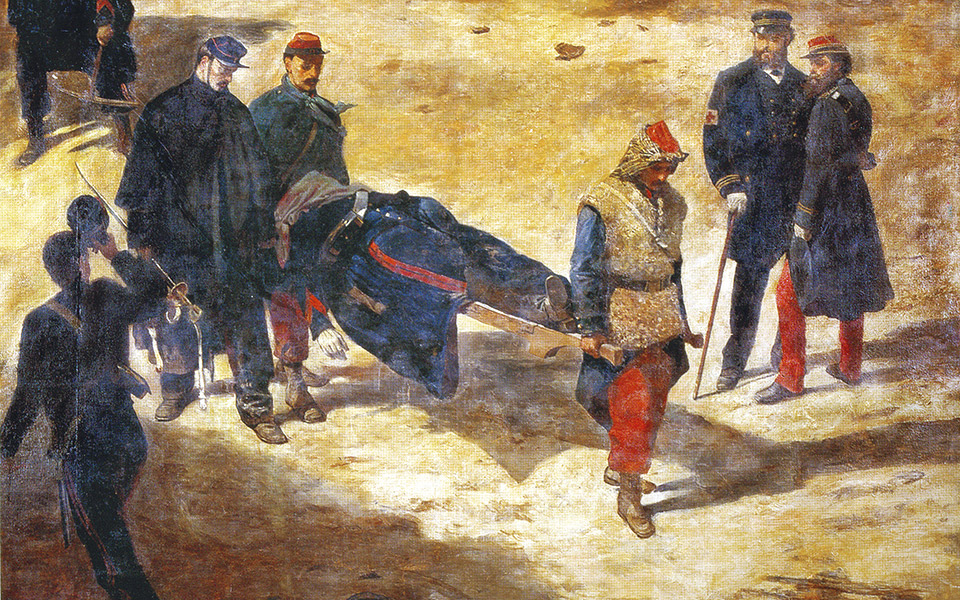
© Teloglion Foundation of Art, Thessaloniki
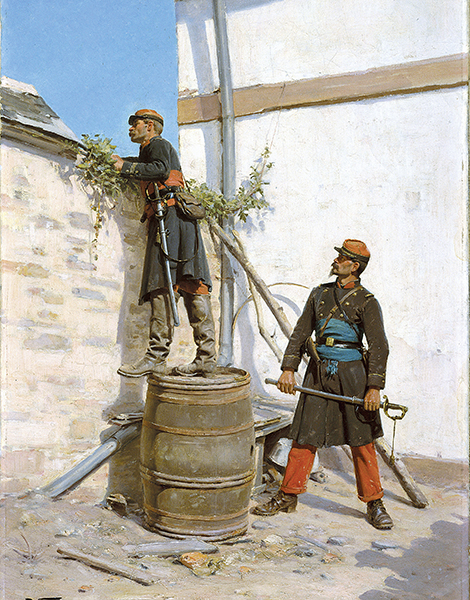
© Μusée de l’ Armée, Paris
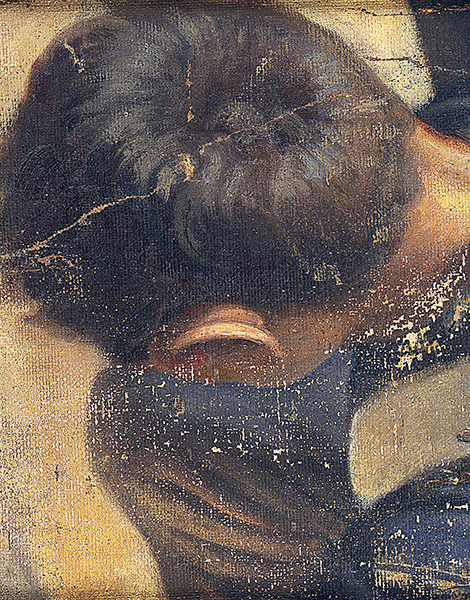
© Teloglion Foundation of Art, Thessaloniki
The volunteers of the Legion Grecque
If Delacroix was the artistic promoter of the Greek War of Independence in France, Philippoteaux was the “photojournalist” of French history, painting an amazing circular panorama that placed the viewer right in the middle of the battle for the Fort of Issy, an action from the Franco-Prussian War. The 10 surviving segments of the impressive cyclorama offer a rare, experiential glimpse of the 1870-71 siege of Paris by Prussian forces.
Christina Tsagkalia, the Teloglion Foundation’s historical art researcher, draws attention to the Greek volunteer forces that fought against the Prussians. The idea of volunteering emerged after the capture of Napoleon III in 1870 and continued into 1871. Approximately 1,500 Greeks, influenced by the Greek press, were integrated in various units, with most joining the Army of the Vosges under Giuseppe Garibaldi and the Loire Army under General Charles Bourbaki (of Greek descent) and Alfred Chanzy. Members of the Greek community of Marseilles supplied them with new uniforms that bore the insignia ‘LG’, for ‘Legion Grecque’.
The actions of these Greek Francophiles caused a bitter reaction from German Ambassador De Wagner, who proposed stripping the fighters of their Greek citizenship. While this did not happen, those who survived and returned to Greece were tried for desertion and sentenced to two years’ imprisonment and hard labor despite their higher rank.
Three hundred names from the rosters of Greek volunteers will be placed next to a model of the Rotunda, the building outside the Panathenaic Stadium that housed the complete Philippoteaux ‘The Siege of Paris’ panorama during the first Modern Olympic Games (1896). “Certainly some of the Greek volunteers would have seen the painting in 1896,” says Tsagalia. “We do not know if the war scenes awoke memories. But we know these soldiers were highly praised by both Greek and French press; we know, too, that the poem ‘Ode to Greek Volunteers’ by Victor de Laprade was inspired by the action of these brave Greeks.”
The exhibition has been organized under the auspices of the French Presidency and will be inaugurated by the President of the Hellenic Republic, Prokopis Pavlopoulos, on 18 October.
“We do not know if the war scenes awoke memories. But we know these soldiers were highly praised by both Greek and French press; we know, too, that the poem ‘Ode to Greek Volunteers’ by Victor de Laprade was inspired by the action of these brave Greeks.”

